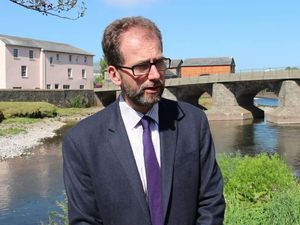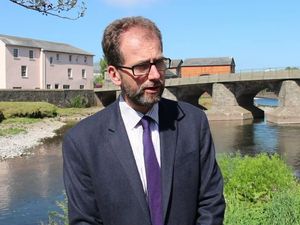Telford school getting government grant to deal with work on collapse-risk concrete
A Telford school is to received a grant to fund the work involved in removing collapse-risk concrete from its site.

Donnington Wood Infant School and Nursery was the only school in Telford and Wrekin found to have reinforced autoclaved aerated concrete (RAAC) present in its building last summer.
But its head, Caroline Boddy, said in a letter to parents the school was “absolutely safe” and ready to welcome pupils, despite missing most of its regular ceilings.
“We have had to remove the ceilings across most of the school and parts of nursery, so that surveyors could check for the presence of reinforced autoclaved aerated concrete,” she wrote.
"Surveys identified that RAAC is present in some roofs, and work will be planned for later in the school year to address this, but the school and nursery will continue to be open and run as usual.”
Now the Department for Education (DfE) has published details on how it will permanently remove RAAC from all the affected schools and colleges across the country.
RAAC is a lightweight building material used up to the mid-1980s but which has since been assessed to be at risk of collapse.
A school leaders’ union called on the Government to provide more financial support to schools facing ongoing issues.
A total of 234 education settings in England have been identified as having RAAC in some areas of their buildings, which is a slight rise on 231 on November 27.
The DfE has said that 119 of these schools will have one or more buildings rebuilt or refurbished through the Government’s School Rebuilding Programme as works to remove RAAC are more extensive or complex.
A further 110 schools and colleges – where works will typically be smaller in scale – will receive a grant to help them remove RAAC from their buildings. They included Donnington Wood.
Education Secretary Gillian Keegan said: “Nothing is more important to me than the safety of every child and member of staff in school.
“We will continue to work closely with schools and colleges as we take the next step to permanently remove RAAC from affected buildings.”
The DfE has said its RAAC identification programme is now complete, as 100 per cent of schools and colleges with blocks built in the target era have responded to its questionnaire.
Earlier this week, Geoff Barton, general secretary of the Association of School and College Leaders (ASCL), sent an open letter to the Education Secretary calling for schools with RAAC to be exempt from Ofsted inspections until they were “fully operational”.
A school or college that has confirmed RAAC on site will be eligible for an inspection this term, but can ask for an inspection to be deferred.
Mr Barton said managing RAAC was still creating “major issues” for schools – including lack of access to specialist equipment and limited or no catering facilities.
The union warned in its submission to the Treasury that an “unacceptable” wait for mitigation works at RAAC-affected schools meant parents were withdrawing their children and moving them to different schools, and applications for September 2024 for these affected schools were down.
After the Mr Barton said: “We welcome this much-needed clarity on the nature of the work to remove RAAC from the schools and colleges affected.
“This is an important step, but it is only one step towards solving this crisis and a number of unanswered questions remain.
“Given the severe pressures on the school estate as a whole, we need assurances that this work will be funded wholly through additional capital expenditure and money will not be diverted from other sources.
“There must also be clear timelines set out for when this work is going to be completed.
“We continue to urge the government to provide better support for schools while they wait for RAAC to be removed, including through the introduction of a new recovery funding stream to enable catch-up provision for pupils whose learning has been impacted.”
Paul Whiteman, general secretary of school leaders’ union the NAHT, said: “This announcement doesn’t contain any new money from the Treasury, but it does set out how those schools currently identified as being affected by RAAC will receive the costs they require for the building work needed to fix it. That will be welcome information for those schools.
“However, there is still a concern that we don’t know the full extent of all the schools affected, as not all surveys have been completed successfully.
“And while dealing with RAAC is crucial, we really need to see more ambitious investment from the Government in bringing the schools estate up to scratch overall – from RAAC, to asbestos, to general disrepair – they need a plan to tackle all school building issues before they become the next big crisis. That can’t happen without more money from the Treasury.”





